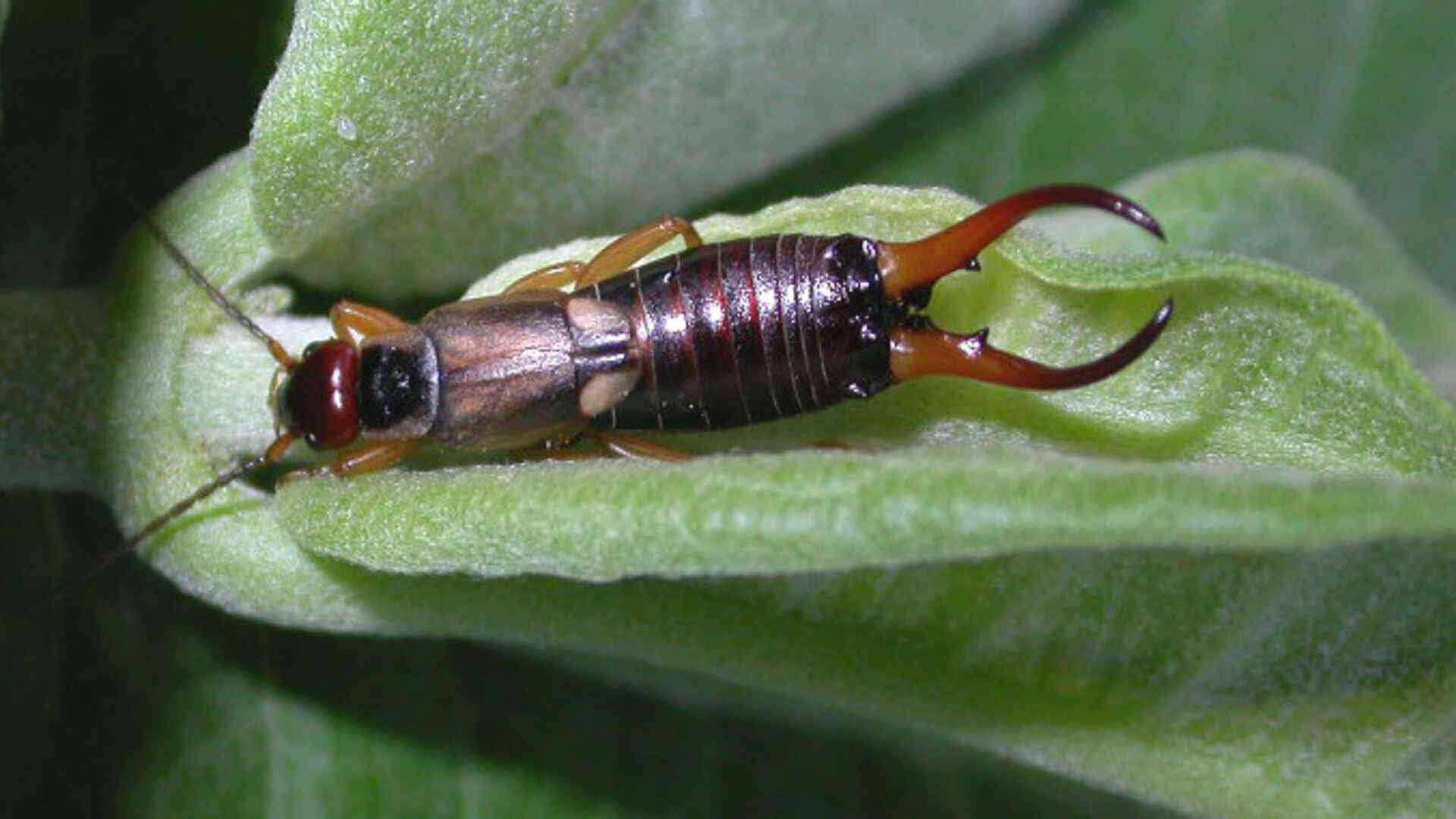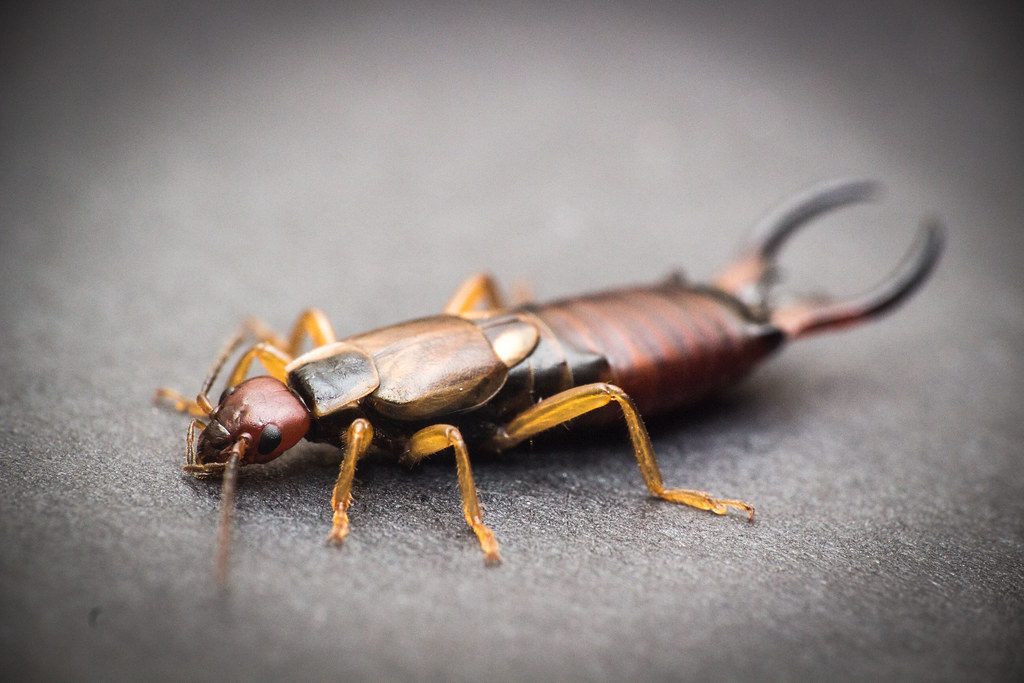Key Takeaways
- Earwigs eat plants, insects, and decaying matter.
- They aid pest control but can harm tender garden plants.
- Control them by reducing moisture and sealing entry points.
 Earwigs are often seen as pesky intruders, but their eating habits reveal an interesting side to these nocturnal insects. As omnivores, earwigs eat both plant matter and small insects, helping them thrive in gardens and homes.
While earwigs contribute to natural pest control by feasting on aphids and other harmful bugs, their appetite for tender plants can sometimes make them unwelcome guests in your garden. In this article, we will explore what earwigs eat and offer tips for controlling them in your home and garden.
Earwigs are often seen as pesky intruders, but their eating habits reveal an interesting side to these nocturnal insects. As omnivores, earwigs eat both plant matter and small insects, helping them thrive in gardens and homes.
While earwigs contribute to natural pest control by feasting on aphids and other harmful bugs, their appetite for tender plants can sometimes make them unwelcome guests in your garden. In this article, we will explore what earwigs eat and offer tips for controlling them in your home and garden.


Not getting a solution?
Get your free pest control estimate today!What do Earwigs Eat?
Earwigs are opportunistic feeders, meaning their diet varies based on availability and environment. They consume both plant and animal matter, making them versatile survivors in different habitats. This versatility in their diet not only helps them survive in diverse conditions but also gives them a dual role in ecosystems. They act as natural pest controllers while potentially damaging tender plants. Organic Material Earwigs feed on decaying plant matter, such as dead leaves and rotting wood, aiding in decomposition and nutrient recycling. Their scavenging reduces plant disease spread and keeps habitats clean, though large populations may become a nuisance. Small Insects Acting as natural pest controllers, earwigs prey on garden pests like aphids, mites, and insect eggs. Their predatory behavior benefits gardeners by helping control pest populations naturally. Plant Materials Earwigs feed on leaves, flowers, fruits, and vegetables, often chewing the edges of leaves and petals. They are especially drawn to soft fruits like strawberries and apricots, as well as tender crops like lettuce, beans, and potatoes, potentially damaging gardens. Fungi Earwigs consume fungi found on decaying plant material, limiting fungal growth in their habitats. While beneficial, their presence may signal excessive moisture, highlighting the need for better ventilation or drainage. Earwigs’ ability to shift between plant and insect matter makes them fascinating yet occasionally troublesome creatures to deal with. Visit our Species, Control, and DIY Guide sections for additional resources on earwigs and ways to tackle an earwig infestation.What Do Earwigs Eat Outdoors?
In the wild, earwigs have a diverse diet, feeding on plant material, decaying organic matter, and small insects. They consume leaves, flowers, fruits, and tender plant shoots, often damaging soft fruits like strawberries and apricots. While they can cause minor harm to plants, their role as decomposers helps enrich the soil as they break down leaves, mulch and other organic matter. Additionally, earwigs prey on small pests such as aphids and mites, providing natural pest control and balancing the harm they may cause to plants.
What Do Earwigs Eat Inside Your Home?
When earwigs invade homes, they adapt their diet based on available resources. They typically feed on crumbs, pet food, and pantry items. In some cases, earwigs may also chew on paper, cardboard, or wallpaper glue, especially in damp environments where these materials can absorb moisture. Earwigs are particularly drawn to moist areas such as bathrooms, kitchens, and basements. They may feed on damp towels, plant soil, or organic debris in these spaces. While they rarely cause significant damage indoors, their presence can be bothersome.How Long Can Earwigs Live Without Food?
Earwigs can survive without food for two to four weeks, depending on environmental factors like humidity and temperature. Their low metabolic rate allows them to conserve energy and endure periods without a food source. However, while they can go weeks without food, they cannot survive long without moisture. Their survival is significantly reduced in dry conditions, often lasting only a few days to a week.
What is Earwigs’ Role in the Ecosystem?
Earwigs contribute positively to ecosystems, especially in gardens, by acting as natural predators of pests like aphids, mites, and caterpillars, reducing the need for pesticides. Their scavenging aids nutrient recycling by breaking down organic matter, enriching the soil, and promoting plant health. Despite their benefits, earwigs can be problematic in large numbers. They may damage young plants, flowers, and fruits in gardens and become a nuisance indoors, though they rarely cause significant harm.
How to Prevent Earwig Infestation?
Preventing earwigs effectively requires addressing their preferred habitats and food sources while leveraging natural control methods. Here are practical strategies to reduce their presence: Steps to Prevent Earwigs: Expert Methods for a Pest-Free Environment Earwigs are common household pests known for their intimidating pincers and affinity for damp, sheltered areas. To keep earwigs out of your home and garden, it’s essential to eliminate conditions that attract them and block their entry points. Below are in-depth preventive steps you can implement to significantly reduce earwig infestations. 1. Eliminate Excess Moisture and Improve Ventilation Earwigs thrive in damp, dark, and humid environments, making moisture control crucial for prevention. Reducing moisture levels makes your home less attractive to these pests.Why This Works
-
Moisture Attracts Earwigs: Earwigs need moist environments to survive and breed. Damp conditions offer perfect hiding and nesting areas.
-
Prevents Mold and Mildew: Managing moisture reduces mold and fungi, which attract other pests and degrade indoor air quality.
How to Implement
-
Fix Leaky Pipes Promptly: Inspect faucets, pipes, and under-sink areas regularly. Fix any leaks immediately to prevent moisture buildup.
-
Enhance Ventilation: Install or use exhaust fans and open windows to reduce humidity. Consider dehumidifiers in basements or humid rooms.
-
Proper Drainage: Clean gutters and ensure water drains away from your foundation. Eliminate standing water and improve yard drainage.
Why This Works
-
Removes Attraction: Eliminating accessible food discourages earwigs from lingering around your home.
-
Prevents Infestations: A consistently clean environment minimizes the risk of an earwig infestation taking hold.
How to Implement
-
Regular Cleaning: Sweep floors often, especially in kitchens and dining spaces, and clean under appliances and furniture.
-
Pantry Management: Keep food in airtight containers to block access to staples like cereals and pet food.
-
Clear Yard Debris: Remove rotting leaves, mulch, and woodpiles around your home to eliminate common earwig hiding spots.
Why This Works
-
Physical Barrier: Sealing gaps creates a direct barrier, blocking earwigs from entering indoor areas.
-
Long-term Protection: Consistent maintenance of entry points provides ongoing defense against earwigs and similar pests.
How to Implement
-
Inspect and Caulk Cracks: Check for gaps around doors, windows, and utility lines; seal with silicone or latex caulk.
-
Weather Stripping: Install and maintain tight weather stripping on windows and doors to prevent pest entry.
-
Foundation Inspection: Seal foundation cracks with mortar or concrete repair products to block underground entry routes.
Why This Works
-
Physical Deterrent: Diatomaceous earth damages pest exoskeletons, causing dehydration and death upon contact.
-
Natural Repellents: Essential oils emit scents that earwigs dislike, keeping them away from treated areas.
How to Implement
-
Diatomaceous Earth Application: Sprinkle food-grade DE near entry points, garden beds, and foundations. Reapply after rain.
-
Essential Oils: Use peppermint, lavender, eucalyptus, or citrus oils diluted in water to spray around common entry areas.
-
Routine Treatment: Reapply natural deterrents every few weeks for ongoing protection.
Why This Works
-
Natural Population Control: Predators naturally reduce earwig numbers without chemicals or manual methods.
-
Eco-Friendly: Encouraging beneficial wildlife boosts biodiversity and improves garden pest control.
How to Implement
-
Bird-Friendly Garden: Add birdhouses, feeders, and birdbaths to attract birds that eat earwigs.
-
Create Amphibian Habitats: Use shallow water features and moist, sheltered areas to invite frogs and toads.
-
Limit Pesticide Use: Avoid chemical pesticides to preserve natural predators and maintain balance.
| Myth | Fact |
|---|---|
| Earwigs crawl into ears and burrow into brains. | This is a myth; earwigs do not seek out human ears and are not interested in entering them. |
| Earwigs are dangerous and can bite humans. | Earwigs are not harmful to humans. They use their pincers for defense and capturing prey. |
| Earwigs only eat plants and cause garden damage. | Earwigs are omnivores and also consume pest insects, playing a beneficial role in gardens. |
| All earwigs can fly. | While some earwigs have wings, they are not strong fliers and typically prefer to crawl. |
| Earwigs are only found in homes. | Earwigs are found worldwide in various habitats, including gardens, forests, and fields. |





